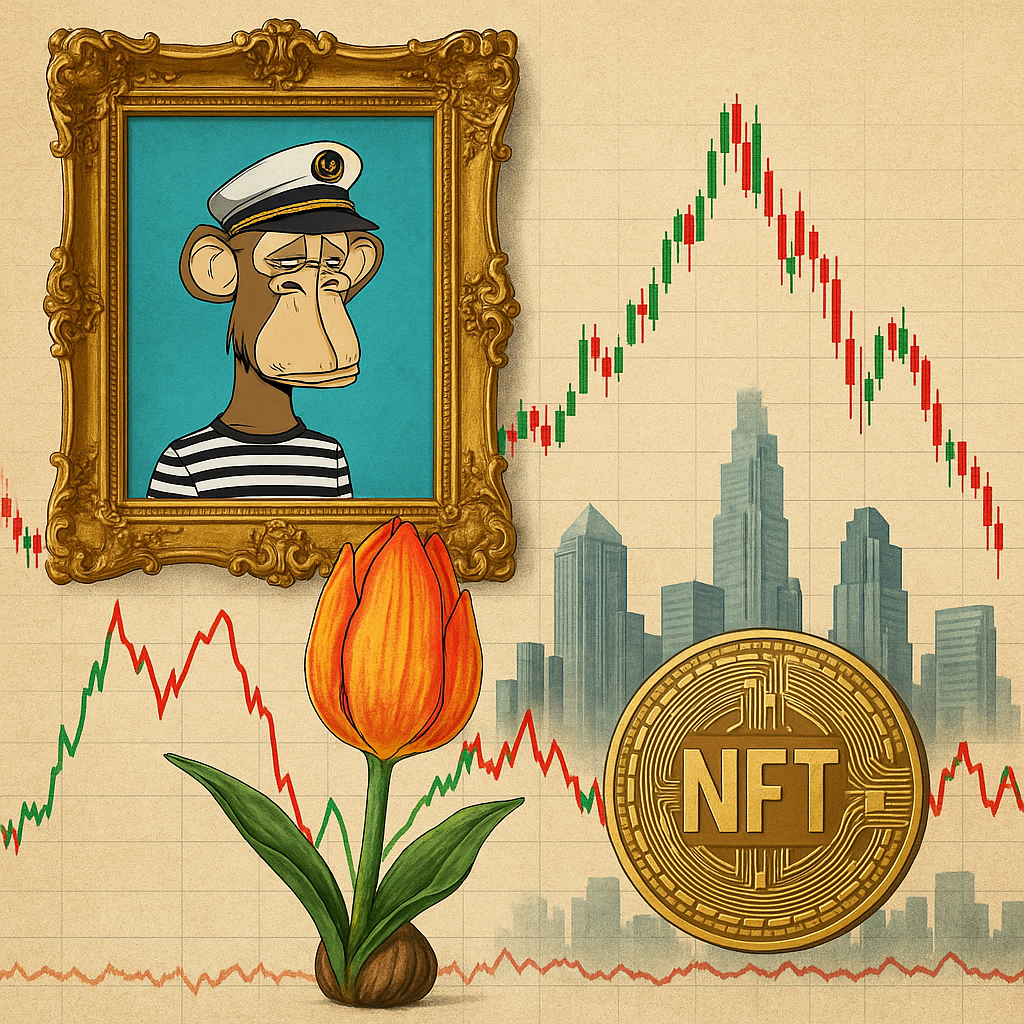
The Golden Era of Money
Between Andrew Jackson’s destruction of the Second Bank of the United States and the outbreak of World War I, the world underwent a remarkable monetary transformation. Gold became the backbone of global finance. Currencies were tied to it. Trade flowed through it. And monetary policy bowed before it.
This era, often romanticized by hard money advocates, is seen as a time of fiscal discipline, low inflation, and international stability. But was it really that golden?
In this piece, we explore:
-
How the gold standard rose to global dominance
-
The advantages of hard money: stability, trust, and discipline
-
The downsides: deflation, rigidity, and crises that couldn’t be eased with flexible policy
-
How the suspension of the gold standard fueled World War I, the death of up to 15% of Europe’s military-age males, and shaped our entire world today
And finally, we ask the big question:
Does the past really justify a return to gold? Or does the gold standard’s collapse prove its fatal flaw?
The Epic Saga
So before we progress to founding our current Federal Reserve System, the period between Jackson and World War I deserves an analysis. Here’s why - sound money advocates often point to this period of history as one of remarkable stability, growth, and “sound” currency practices. I’m deep into The Bitcoin Standard right now, which I’d highly encourage everybody to read. This is not because I think everybody should come out of this buying BTC, but because we (the royal we) really don’t fully understand money, banking, and our entire monetary system.
Any monetary system has a deep, inherent tension that is nigh unavoidable. As we explored in “The Evolution of Land, Money & Value,” mankind has been engaged in a perpetual quest for the “perfect” monetary system since the beginning. The core conflict is this: savers want a stable currency—something that holds its value. But kings, emperors, and senators want a flexible one—something they can manipulate, inflate, and weaponize to fund expenditures and wars.
Over time, the rulers usually win. From Roman emperors slowly debasing the solidus, to the Federal Reserve printing trillions to fund whatever’s politically urgent, the pattern holds.
That’s why gold has long held its appeal. Not because it’s magical. Not because it has intrinsic utility. But because it is:
-
Culturally revered,
-
Extremely difficult to produce, and
-
Scarce.

This is captured in The Bitcoin Standard through the stock-to-flow ratio, which is one of the most elegant monetary concepts I’ve encountered.
Gold has a low stock-to-flow ratio. That means the existing stockpile of gold is massive relative to how much new gold can be mined each year. This scarcity, paired with the stability of supply, helps preserve purchasing power.
Fiat currencies, by contrast, can expand their “flow” at the stroke of a pen - or the click of a mouse.
Gold, for all its strengths, has two critical flaws when used as an actual currency unit.
First, it’s not easily divisible. You can’t just shave off a piece of a gold bar every time you buy bread. That’s why silver circulated alongside gold for centuries - filling the gaps for smaller transactions.
Second, it’s not exactly portable. Sure, it’s technically portable - but try buying a house, an apartment building, or a business with literal gold bars. Not practical. Not secure. And definitely not fast.
So, as global trade expanded and economies became more complex, a new system emerged: banks began storing gold in vaults and issuing paper notes redeemable for that gold.
This solved both problems at once.
-
You could now transact in smaller denominations - no need for fractional coins or silver, which is why silver eventually became demonetized and lost value.
-
Paper currency was light, efficient, and easy to move - perfect for a growing financial system.
The Global Convergence to the Gold Standard
Britain led the way in 1821, going fully gold-backed before anyone else. This wasn’t just economic policy - it was empire strategy. As the British Empire expanded, so did trust in their currency. If you were trading in pounds, you knew it was backed by something real. That mattered.
By the 1870s, others followed. Germany adopted the gold standard in 1871 after its victory over France (and used the reparations to fund it). One by one, the rest of Europe came onboard. The United States formally joined in 1879 after the “greenback era” ended. Even smaller economies signed up.
Why the rush?
Because gold provided a universal language. A shared benchmark. In an increasingly interconnected world, it smoothed trade, stabilized exchange rates, and - crucially - created trust between nations that didn’t necessarily trust each other politically.
By the 1880s and 1890s, gold was king. The world’s major economies were all speaking the same monetary language - and for a time, it really did seem golden.
A Balanced Appraisal
The Pros
-
Price Stability - Prices didn't deviate much because of the powerful stability of the underlying source (gold). You had an almost non-inflationary world. For instance, from ~1870 to 1913, US prices remained almost flat! Consider also that this environment would anchor a “savers” mentality. Because you know your money isn’t being deflated, it wouldn’t influence (en masse) a desire to spend prolifically but rather to save and invest.
-
Trust in Currency - In tandem with the above, currency anchored to gold encouraged trust, which is important.
-
Stable Exchange Rates—Because currency was almost universally backed by gold, it encouraged stable international exchange rates and sparked a boom in trade. It became much easier to trade when currency values didn’t fluctuate wildly. Currency was anchored to gold, which promoted a period of global prosperity and security.
-
Fiscal Discipline - Governments couldn’t simply “print money,” which forced nations to practice fiscal discipline.
-
A “True” Global Financial System - this wasn’t a system enforced by fiat or weapons. It was enforced by global adherence to a conservative system of gold exchangeability for notes and a universal faith in the value of this precious metal. In short, it is the first period of history with a truly “coordinated” global standard for money.
But the cons
-
Deflation - while a low to no inflation environment is generally good, deflation does have problems. You see, growth could literally outstrip the growth of currency. That is to benefit creditors and asset owners but generally negative for smaller folk and business builders. Access to easy liquidity is “generally” a positive for promoting business growth. This manifested during periods like “The Long Depression” - from 1873 to 1879. This, in turn, inspired populist uprisings against the gold standard - culminating in William Jennings Bryan’s speech “The Cross of Gold.”
-
Inflexibility in a Crisis - Similar to the above, there was no centralized mechanism to inject liquidity into the system during crises.
-
Gold Outflows - a more pernicious issue was that trade imbalances could drive outflows of gold from one nation to another, which was problematic. One of the only ways to solve this was to raise interest rates, which could exacerbate recessions or issues during recessions.
But truly, the greatest flaw (I use this with italics because some - myself included - might call this a benefit) was that governments couldn’t deficit spend their way through wars.
And this, alas, was the death knell to a global system of shared prosperity and trade. When World War I began, most nations anticipated it would end swiftly. As we know, it didn’t. The killing fields erupted across Europe and cost warring nations a staggering number of young men (by some estimates, 10 - 15% of Europe’s military age male population perished).
It was a senseless war in many ways. Certainly in cost to human life. But one of the real tragedies was that almost every single belligerent nation suspended the gold standard at the same time. The result was a massive rise in deficit spending and a prolongation of a war that would probably have ended very quickly if the belligerent nations hadn’t been able to deficit spend their way through it.

As a result, the 19th century became the most blood-soaked century in human history.
And the effects of that last until this very day.
So - return to the gold standard?
We are fairly far gone today from this world. Returning to that system would have serious ramifications - both positive (longer-term) and profoundly negative (short-term, systemic shocks).
The fatal flaw of the gold standard is that it could be thrown out in times of duress. Any system that relies upon humans to do the right thing is inevitably bound to fail. It’s a sad fact of life.
This does not all lead to Bitcoin, by the way - but it does make an argument for a monetary system that is sound, has a low stock-to-flow ratio, and, critically, one that cannot be manipulated by Kings, Emperors, or democratically elected leaders.


